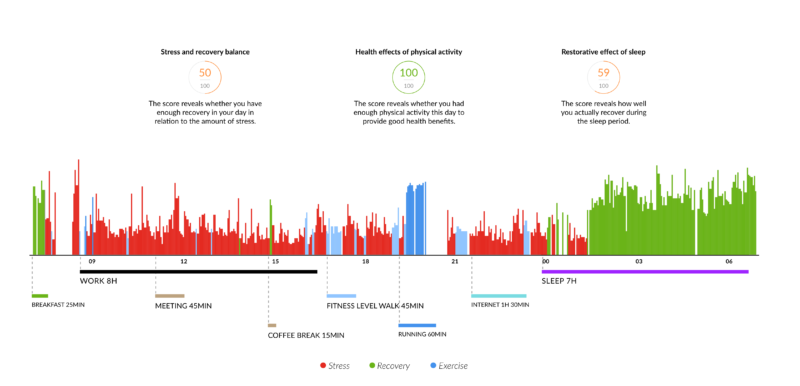Article
WE HELP LEADERS IMPROVE THEIR SLEEP AND PERFORMANCE – ONE DAY AT A TIME!
Want to know more?

Over the past 12 years, we have had the privilege of measuring stress reactions, sleep duration and quality, and physical activity over 5-7 days for leaders in 30 global organizations.
Our longer leadership journeys always include the use of an HRV (heart rate variability) device, providing up to three measurements over a 6-12-month period. This allows each leader ample time to study their daily patterns and gradually integrate changes and adjustments that will improve their business performance, sleep and physical activity over time.
Exposure to blue light and radiation from devices after 9 PM has an immediate negative impact on sleep. Using laptops, mobiles, or watching TV for 1-2 hours between 9-11 PM significantly increases the risk of the HRV device showing red (fight & flight) during the first 1-3 hours of sleep, despite being at sleep. We refer to this as delayed sleep, which is one of the most common patterns we observe among leaders.

Our recommendation for leaders is to limit device usage after 9 or 10 PM and instead engage in activities such as reading a book or having meaningful conversations with loved ones. Thirty minutes before bedtime, we suggest dimming the lights, enjoying a calming cup of tea, reading a book, doing meditation, yoga or breathing practices, and minimizing any stimulating activities.
Alcohol consumption also significantly affects sleep quality. For 75% of leaders who consume as little as 2-3 units of alcohol in the evening, the average sleep quality drops by 25-35%. We advise leaders to avoid alcohol after 7 PM, especially if you know that you have to perform at a high level the day after.
Many leaders work long hours without breaks, which is not the most efficient approach. We recommend incorporating at least two 15-minute strategic recovery breaks each day. During these breaks, step away from the office environment and devices to engage in activities like guided meditation, simple yoga stretches, or breathing exercises.
Our data shows that 40% of leaders experience more stress at home than at work, underscoring the importance of daily breaks despite a busy schedule. Additionally, 50% of leaders could benefit from increased physical activity. Regular exercise and breaking a sweat more frequently can positively impact both work performance and sleep quality.
The key to improving leaders’ sleep patterns is to help them understand their current state through data and measurements. Private, confidential conversations with a LeadUp Coach can then identify specific changes and adjustments in their work and personal life to gradually enhance sleep duration and quality, ultimately boosting overall well-being and performance.
If you are interested in integrating our HRV devices into one of your current Leadership Program, we invite you to get in touch
